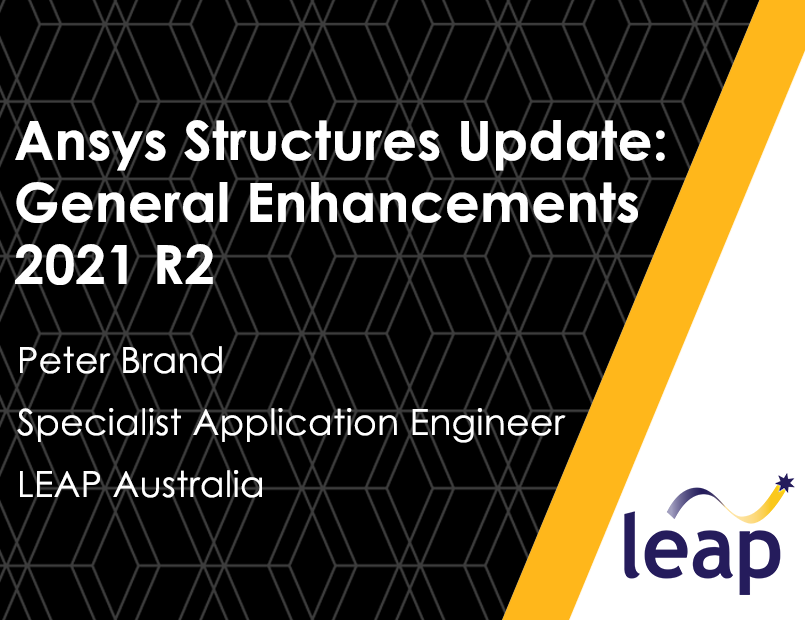Ansys 2021 R2 has arrived and in this post Peter Brand, Specialist Application Engineer at LEAP takes a closer look at the general enhancements and new features added to Ansys Mechanical. If you have not already watched them you can also see Peter’s meshing highlights from Ansys 2021 R2 here.
In the first section below Peter looks at several new features including a new cable element, CABLE 280 which offers improved robustness and accuracy over LINK 180 and hence is now the recommended option when modelling cable structures. There is also a new element for bolt pretension which uses new technology based on the joint, MCP184 that supports large rotation as well as small rotation.
Other enhancements covered in this first clip include:
• FE support for coordinate systems – the origin can now be defined by elements or element faces.
• FE scoping enabled for explicit systems. Explicit Dynamics systems now support the following boundary conditions being scoped to nodes and/or element faces: Pressure, force, displacement, remote displacement, remote points.
• Shared contact body enables the user to select the contact body when contact side of a Contact Region is scoped to shared edges or faces.
• Shared reference body. Including live demonstration.
Peter then continues by explaining the new Joint types available in Ansys 2021 R2 which are predefined primitive types – parallel, in-plane, in-line and orientation – using a new property added to ‘General Joint’. He goes on to look at the new ‘Delete Part’ feature which provides the option to delete parts and bodies from the Geometry object.
Other features covered in this section include enhancements to Named Selections, thickness FE scoping and stiffness options for shell elements.
In the next clip Peter looks at new ease-of-use improvements to systems coupling and automatic ‘Static to Transient’ analysis for Nonlinear problems which helps solve implicit static problems with convergence issues due to contact getting lost, contact chattering and local buckling.
Peter then explores some of the new post-processing features including accelerated animation, flexible probes and enhanced text display options within the probe tool.
Next Peter explains the changes to Remote Point Connections – The connections between Remote Points and the scoped entities can be viewed for remote boundary condition objects like Spring, Joints, Remote Displacement, etc. This display option is now available from the Style group on the Display tab.
The following clip also covers mesh translucency, projected 3D line-to-surface contact and contact wear improvements.
The following clip guides you through the changes to history tracking, resource prediction and statistics as well as updated methods of importing external data, before Peter takes a closer look at modelling crack propagation through Separating Morphing Adaptive Remeshing Technology (SMART). By utilising SMART for mesh coarsening users can achieve a finer crack tip as mesh exists only around crack front. Additionally the crack tip mesh moves along with propagating crack which ensures accuracy without increase FE model sizes.
Finally Peter provides a brief overview of the enhancements to Acoustic simulation within Ansys 2021 R2 which include improvements to post-processing such as far-field contour plot on planes and spherical surfaces and sound intensity on nodes and elements.
There have also been significant improvements to acoustic coupling with acoustic loads now supported in Mechanical, enhancements to coupled field boundary conditions as well as to coupled field results.
We hope that you found this update information helpful. In case you missed it we have posted a similar update on the meshing enhancements in Ansys 2021 R2 in a separate article here.

